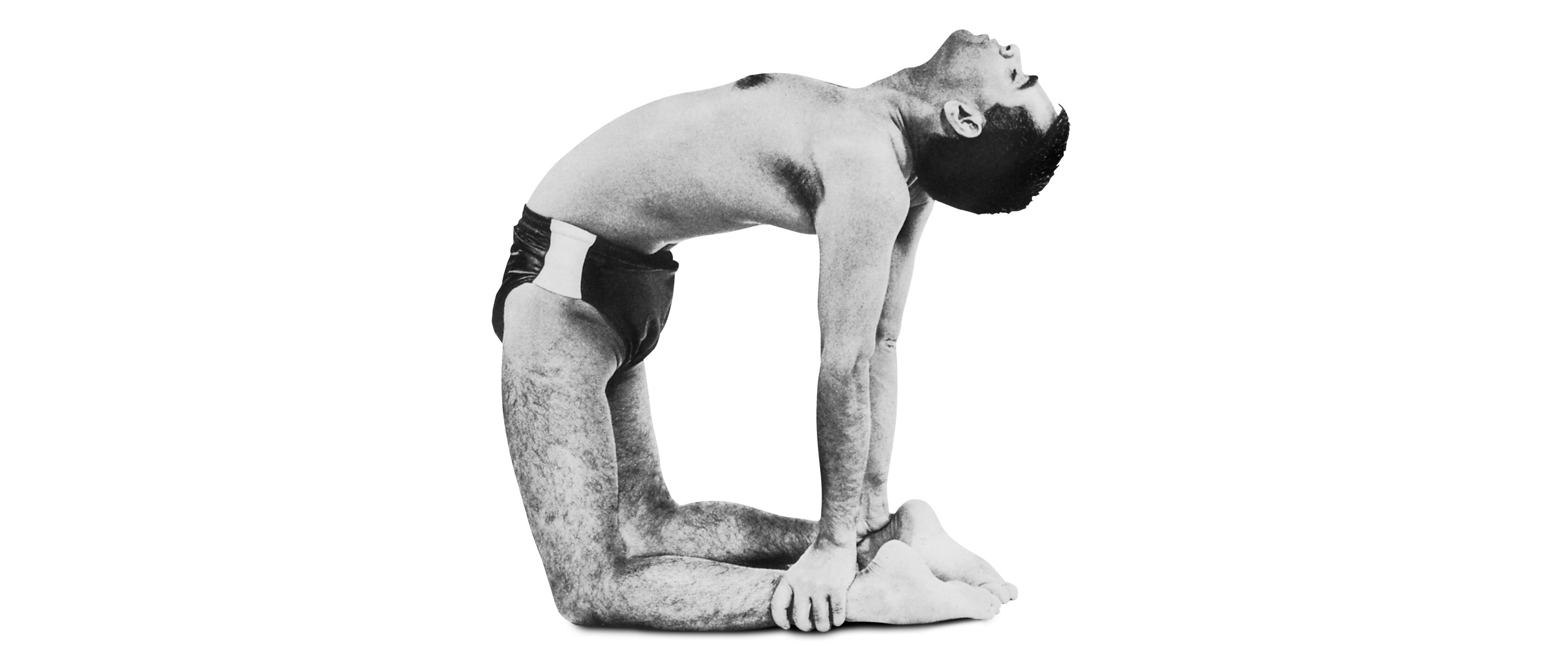Hatha Yoga Tip
Camel – Uṣṭrāsana – Beginner and Intermediate
Camel stretches your chest and throat muscles while also strengthening your hamstrings and the muscles of your buttocks. Relax in Child’s Pose for at least 8 breaths afterwards.

BEGINNER
1. Kneel on the mat with your knees and feet hip-width apart, arms by your sides. Breathe slowly and rhythmically.
2. Support your lower back with both hands. Inhale and slowly bend backwards, taking your head back first, then your shoulders and chest, and finally your lower back. Hold for up to 30 seconds, breathing slowly and rhythmically. Continue with step 3 or come out of the pose by inhaling, contracting your abdomen, and lifting your torso back up.
INTERMEDIATE AND ADVANCED
3. To come into the full pose, breathe slowly as you take your hands, one at a time, from your back to your ankles. Push your pelvis forwards by contracting your buttocks and the backs of your thighs. Hold for up to 30 seconds, breathing slowly and rhythmically from your abdomen. On an inhalation, contract your abdomen and lift your torso back up, then repeat.
Thoughts control one’s life, mould one’s character, shape one’s destiny and affect all other people. When the power of thought is realised, it is the beginning of great spiritual growth in the individual and all of humanity. – Swami Vishnudevananda
To realise God is your duty. God-realisation is your birthright. Develop strong yearning for God-realisation. – Sri Swami Sivananda
Quick Links
Spiritual Calendar
| JANUARY 2024 1 New Year’s Day 7 Ekadasi 11 New Moon 20 Ekadasi 26 Full moon FEBRUARY 2024 Understand life. Live divinely. Seek good company. Fear not. Waste not time. Depend on God. – Sri Swami Sivananda |
Glossary
Abhyasa
Abhyasa or practice is the effort to secure steadiness of the modifications of the mind. The effort to restrain all the vrittis (waves) of the mind and to make the mind steady like the jet of a lamp in a windless place is called abhyasa. To drive back the mind to its source – Hridaya Guha (the cave of the heart) and get it absorbed in Atman (the Self) is abhyasa. To make the mind inward and to destroy all its outgoing tendencies is abhyasa. And this practice should be done for a long time without any break and with perfect devotion.
Through abhyasa you will have to change the outgoing vishaya vrittis of the mind. Without the vrittis of the mind you cannot enjoy sensual objects, and if the vrittis along with samskaras are controlled, manonasa or the annihilation of the mind follows.
Abhyasa becomes fixed and steady when practised for a long time without any break and with perfect devotion. Constant, steady application is indispensable for perfect control of the mind and attainment of asamprajnata samadhi which alone can fry all the seeds of samskaras. Therefore, constant and intense practice is needed for a long time. Then alone the wandering mind will come under your perfect control. Then alone wherever it is directed it will be ever at rest. Without practice nothing can be achieved. The practice should be accompanied by perfect faith and devotion. If there is no faith and regularity, success is impossible. Abhyasa should be continued until you get perfection.
From Sadhana by Swami Sivananda
